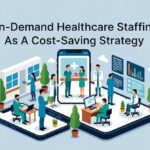Healthcare pricing strategies are a key part of patient care, ensuring that healthcare providers receive fair compensation for the services they provide. With rising costs and increasingly complex insurance policies, it’s more important than ever to have a clear strategy in place that ensures everyone -from doctors to patients- is taken care of. The best healthcare pricing strategies will emphasize value-based care while also keeping patients’ financial needs in mind.
When creating healthcare pricing strategies, there are many considerations to keep in mind. For instance, providers should be aware of their contract terms with insurers and understand how much they can charge for different services.
It’s also important to ensure that prices accurately reflect the value provided by the service or procedure being offered.
It is essential to evaluate and compare the different pricing strategies available in order to make informed decisions. For healthcare providers, it is important to customize a pricing strategy that best fits their operations and financial goals.
This article explores how to evaluate the fit of healthcare pricing strategies for those seeking maximum efficiency and cost savings.
How to Evaluate the Fit of Healthcare Pricing Strategies
Cost-based Pricing
Cost-based pricing is a common healthcare pricing strategy that involves assessing the cost of providing a service or product and adding to it an additional percentage in order to cover overhead expenses and make a profit.
This type of pricing approach can be beneficial for organizations looking to maintain stable revenue streams, as costs are generally fixed for services and supplies.
However, this method does not factor in market conditions or competition, which could potentially lead to lost revenue opportunities if prices are too high.
For healthcare organizations looking to maximize their profits from cost-based pricing, it is important to keep up with industry trends and regularly audit internal processes.
Organizations must be aware of the necessary operating costs associated with each service they provide and adjust accordingly when necessary.
It is also important for healthcare providers to review their competitors’ prices so they do not set themselves at an unfair disadvantage.
Competition-based Pricing
Competition-based pricing can be an effective strategy for healthcare organizations to evaluate and determine the best pricing model for their services. This approach involves analyzing competitive offerings from other providers in order to set a price that is competitive within the marketplace.
Not only does competition-based pricing help ensure providers get fair prices for their services, but it also helps ensure that patients are able to access quality care at prices they can afford.
When evaluating competition-based pricing, it is important to look at more than just price points—it is also important to consider competitors’ service levels and special offers. For example, if one provider has lower prices but offers fewer services or perks, this should be taken into consideration when setting your own rates.
Additionally, it is highly beneficial to regularly review and adjust your own pricing in light of any changes in the market and among competitors.
Value-based Pricing
Value-based pricing is an effective way for healthcare organizations to ensure their services are priced appropriately for the market. Through a value-based pricing strategy, healthcare organizations can gauge the true worth of their services and then set prices accordingly. This ensures that prices are reflective of quality, as well as the costs associated with providing those services.
For healthcare organizations, value-based pricing is more than just a financial decision; it’s also a business strategy. By taking into account factors such as patient needs and expectations, providers can determine which services should be priced based on value rather than cost alone.
This allows them to maximize their revenues while still providing quality care at reasonable prices. Additionally, this approach helps create more transparency in healthcare pricing strategies, allowing patients to make informed decisions about their treatment options without being surprised by unexpected costs or fees.
Read Also
- Creative Approaches to Alleviating Healthcare Staff ShortagesHospitals and clinics are facing staff shortages, which makes it harder to take care of patients well. Finding simple and useful solutions is very important. Easy changes like flexible work hours, good training, and chances to grow can help staff stay happy. Technology, like online doctor visits and helpful tools, can make work easier. Smart… Read more: Creative Approaches to Alleviating Healthcare Staff Shortages
- Understanding the Role of Sterilizers in Healthcare FacilitiesHave you ever wondered how hospitals keep their equipment safe enough to use on dozens of patients every day? Most people never think about what happens behind the scenes, yet these hidden steps play a huge role in patient safety. Sterilizers are part of that system, working quietly to remove harmful germs before any instrument… Read more: Understanding the Role of Sterilizers in Healthcare Facilities
- Building Healthcare Access Where It’s Needed Most: A Local First ApproachHealthcare shouldn’t depend on where you live. But in the U.S., it often does. If you’re in a big city, you likely have options. If you’re in a small town or an underserved neighbourhood, it’s a different story. To fix this, more healthcare leaders are turning to a local-first approach. That means putting clinics and… Read more: Building Healthcare Access Where It’s Needed Most: A Local First Approach
- Revolutionizing Patient Engagement: Innovative Solutions for Improved Care and Treatment SuccessNavigating healthcare system can often feel overwhelming for patients. Between appointments, prescriptions, and treatment regimens, it’s easy for crucial details to get lost in the shuffle. That’s why effective patient engagement and support solutions are more important than ever. Companies like Serva Health, with their pharma hub services, are stepping up to ensure that patients… Read more: Revolutionizing Patient Engagement: Innovative Solutions for Improved Care and Treatment Success
- On-Demand Healthcare Staffing As A Cost-Saving StrategyThis is an exciting and challenging time for the healthcare industry. Technology is advancing almost faster than humans can keep pace. New legislation is creating fresh challenges for the future of healthcare, and the shifting population demographic continues to place more pressure on healthcare facilities. Amidst these changes, healthcare facilities are facing a critical staffing… Read more: On-Demand Healthcare Staffing As A Cost-Saving Strategy
Bundled Payment Models
When it comes to selecting the right healthcare pricing strategies, bundled payment models are an excellent option. This payment system involves a single, fixed payment for all services rendered within a certain period of time. As a result, providers are incentivized to reduce costs and improve quality of care without sacrificing patient outcomes. Bundled payments can be used for many types of treatments, including inpatient hospital stays and specialty care such as cancer or cardiac care.
The main benefit of using bundled payment models is that they provide both providers and patients with a predictable rate for their services. Furthermore, it creates incentives for all involved parties to offer more efficient and cost-effective healthcare solutions.
Additionally, bundled payments help foster improved communication between clinicians and administrative staff when it comes to coordinating treatments and reducing unnecessary spending on discretionary medical products or services.
Bundled payment models are an increasingly popular pricing strategy within the healthcare industry. This type of model allows providers to bundle services together, allowing them to make more cost-effective decisions when it comes to patient care.
Analyzing the long-term effects of a bundled payment model is key for organizations looking to make informed decisions about their healthcare pricing strategies. Organizations should consider factors such as provider reimbursement rates, quality and performance metrics, and the overall impact on patient satisfaction before selecting a bundled payment model. Additionally, understanding how different elements interact with each other will help ensure that an organization selects the most appropriate option for their specific needs.
Prospect Theory in Healthcare Payments
Prospect theory is a concept that has been studied extensively by economists and behavioral scientists for decades, and has recently seen increased use in the healthcare industry. It states that people make decisions based on perceived gains or losses rather than absolute value.
This is of particular relevance when considering how providers should design their pricing strategies to attract and retain patients. Healthcare organizations must consider patient preferences, budget constraints, health insurance coverage policies, and other factors when determining how to price services.
By leveraging prospect theory, healthcare payment systems can be tailored to maximize customer satisfaction while achieving organizational goals such as cost-efficiency and revenue optimization.
how healthcare providers can leverage prospect theory to evaluate the effectiveness of their pricing strategies in order to find the best fit for their organization’s needs.
Prospect theory is a popular decision-making tool for healthcare providers trying to find the best fit for their pricing strategies. The goal of prospect theory is to help healthcare professionals determine which pricing strategies are most beneficial and cost-effective.
The theory takes into account how people behave when they make decisions that involve risk and uncertainty, making it an invaluable asset in evaluating pricing strategies.
Healthcare providers should use prospect theory to evaluate the effectiveness of their pricing strategies by looking at how patients perceive each option offered.
If a patient perceives one option as more valuable than another, it could indicate that the first option is better suited for the patient’s needs and budget.
Additionally, this type of evaluation can also help healthcare providers determine how successful a particular strategy has been in reaching its target population.
Automation of Medical Claims Processing
Automation of Medical Claims Processing is a critical step in ensuring that healthcare providers are able to accurately and efficiently process patient claims. With the increasing complexity of medical billing, automation is key for streamlining the process and managing large amounts of data more effectively.
Automation also helps organizations reduce errors and avoid costly administrative mistakes while creating an environment of transparency between patients, payers, providers, and other parties involved in the claim cycle.
In addition to providing visibility into the status of claims, automated systems can also be used to identify areas for improvement within the organization’s workflow structure. Evaluating the fit of healthcare pricing strategies is essential for achieving cost savings when automating medical claims processing.
By understanding how pricing strategies impact costs associated with labor, technology, compliance requirements and other aspects of operations it allows organizations to make informed decisions on how best to achieve their goals within their budget constraints.
Conclusion: Optimize Healthcare Prices
The conclusion of the article “How To Evaluate the Fit of Healthcare Pricing Strategies” is that healthcare pricing optimization can be a powerful tool to improve efficiency, maximize profits and reduce costs. Optimizing healthcare prices is not an easy task.
It requires careful analysis, understanding of market trends, and a clear strategy for implementation.
To optimize healthcare prices effectively, administrators should first consider their current position in the market and what changes may be necessary to remain competitive.
They should then develop pricing strategies tailored to their institution that are designed to increase revenue while simultaneously reducing costs.
Finally, it is important for organizations to monitor the results of their efforts closely in order to make continuous improvements and adjustments as needed.
With these steps in mind, administrators can use pricing optimization strategies more effectively and achieve better overall outcomes for their organizations.






